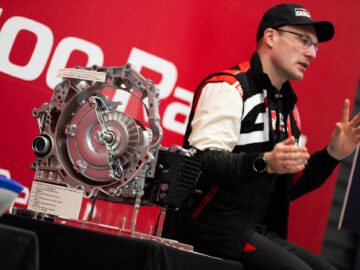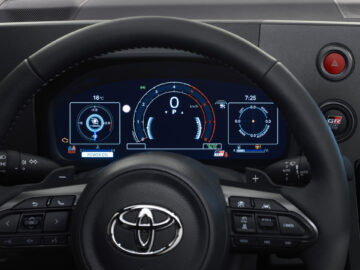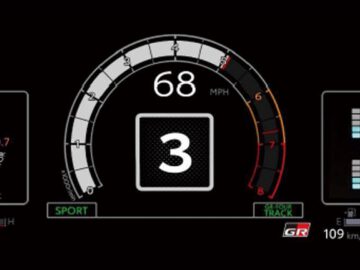The new Toyota GR Yaris (2024): it could be even more extreme – AutoRAI TV
Toyota GR Yaris success number
Toyota has made several changes that make it fair to speak of the “new” GR Yaris. In this article, we’re going to update you on exactly what has been changed, but first a look back at the first GR Yaris. Since the model’s launch in 2020, more than 18,000 units of the GR Yaris have been sold in Europe.
As a Circuit version only
Most of the units sold were the Circuit version, called the Performance in the Netherlands. Hence the decision to provide the new model exclusively in this version. In the ‘Circuit’ specification, the GR Yaris also has a cooling performance pack consisting of an additional radiator, intercooler spray and a modified air intake. This should improve reliability at full throttle.
The new TOYOTA GR YARIS! (2024) – 70,000 euro Yaris? – SNEAK PREVIEW – AutoRAI TV
Three-cylinder turbocharged gasoline engine
There is more. The three-cylinder turbocharged gasoline engine has even more power than before. Engine power has been increased by 20 hp and the driver can call upon an additional 30 Nm of torque. This results in an output of 206 kW (280 hp) and a torque of a whopping 390 Nm. The engine should also be a bit more durable. In Japan, the three-cylinder even kicks it up to 224 kW (304 hp) and 400 Nm. The lower engine output in Europe is due to stricter emissions requirements.
Features of the new G16E-GTS engine include reinforced camshaft, new exhaust valve material and an increase in D-4ST fuel injection pressure. New lightweight pistons with wear rings were fitted and a new intake pressure sensor was added.
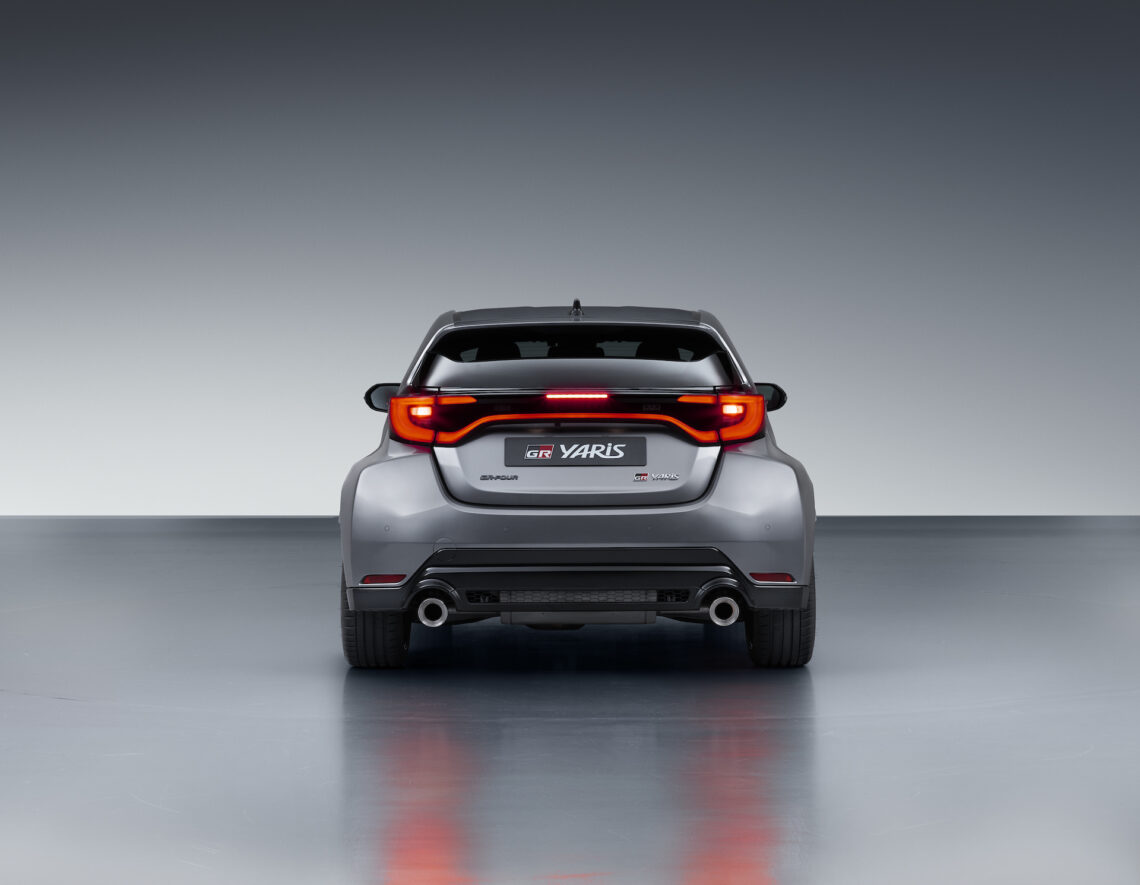
GAZOO Racing Direct Automatic transmission
An important novelty is the arrival of an … automatic transmission! Yes indeed, Toyota is introducing a so-called GAZOO Racing Direct Automatic transmission. This is an eight-speed automatic. An option, as a six-speed manual transmission is standard.
Eight resistances
Why an automatic? Several track tests proved that the automatic version is faster compared to the manual. Thanks to eight instead of six gears, smaller ratios were achieved. The automatic also benefits from a new torque control system. The use of highly heat-resistant material in the clutch and specific tuning of the control software results in lightning-fast shifts, Toyota promises.
M-mode
There is a choice of Sport, Normal and Eco driving modes. Each driving mode affects the electric power steering, air conditioning operation, throttle response and the driver’s instrument display. In models with the new automatic transmission, the shift feel and program is also modified. In M mode, the driver can shift gears by himself. The right way, by the way, because pulling is upshifting and pushing is downshifting. So as it should be.

GR-FOUR
Remaining is the electronically controlled, permanent all-wheel drive system GR-FOUR. This AWD system was developed specifically for the car and offers three modes: Normal, Sport and Track. Each position affects power distribution to the front and rear wheels.
Extra glue = extra stiff
Is there any more news to report? Definitely! The lightweight body of the Toyota GR Yaris is even stiffer than before due to about 13% more welding points and the use of about 24% more structural glue. The platform itself has remained basically the same. Designed specifically for the GR Yaris, the platform combines the front end of the Yaris’ GA-B structure with a new rear end manufactured from Toyota’s larger GA-C platform.

Suspension
Suspension systems were retained with MacPherson struts in the front and double wishbone wishbones in the rear. But Toyota did make improvements based on feedback from race drivers. Adding additional bolts to attach the front shock absorbers to the body suppresses changes in alignment that can occur when the upper bushing deforms when driving under high loads. The front and rear springs have also been modified for optimum performance and better handling control.
Cool interior
The interior makes us particularly happy, as the dashboard gives that real rally feel. Controls that need to be used frequently in racing – such as intercooler spray, ESP off and hazard lights – have been placed closer to the driver so that they can be accessed quickly and easily when using a racing harness. On the passenger side, the stowage area has been made larger to allow room for fitting additional counters or a passenger monitor.
Better vision
The driver’s field of vision from the steering wheel was improved by lowering the top edge of the instrument panel 50 mm, changing the position of the rear-view mirror and tilting the control panel 15 degrees further toward the driver.
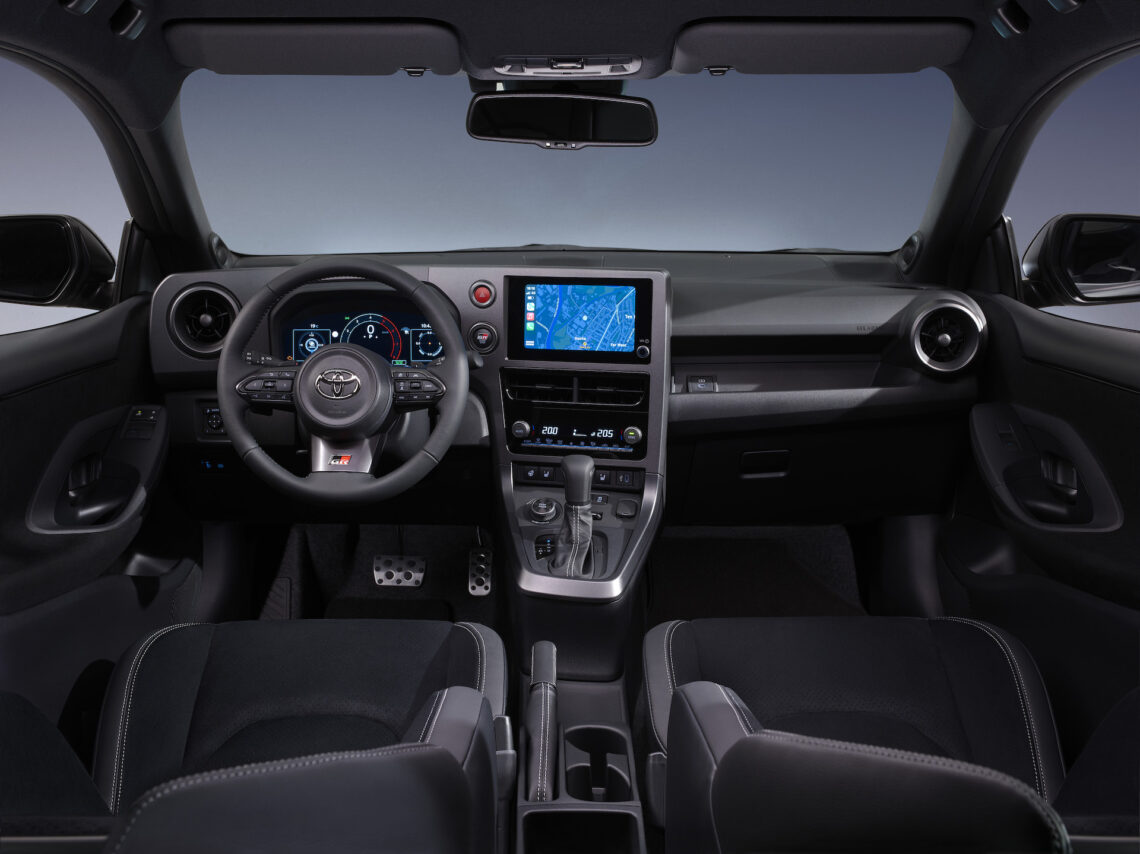
Digital instrumentation
The instrument cluster includes a new all-digital 12.3-inch combimeter with two layout modes: normal and sport, the latter offering a sports performance-oriented data display.
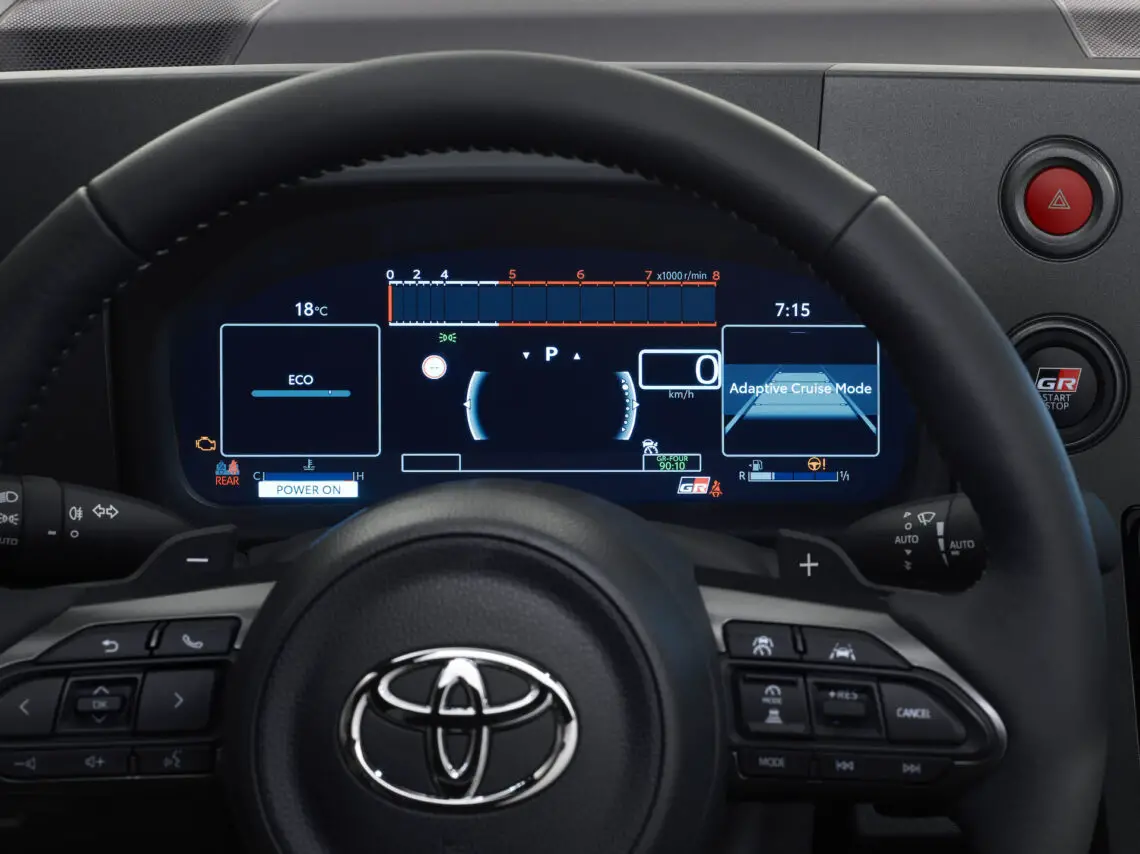
Lower sitting position, nice!
The seating position – a thorny point of the first-generation GR Yaris – has also been greatly improved. The seat has been lowered 25 mm and the steering wheel adjusted accordingly for finding the perfect seating position. Before, you were just a little too high. That has now been resolved.

Toyota GR Yaris design
Has the design been changed as well? Yes indeed, but in a subtle way. At the front of the car, a new steel grille was installed for the lower grille. The side grille has a larger opening and the lower bumper a new split construction that makes repair or replacement easier and cheaper. At the rear, an opening in the lower trim allows air to escape through the bottom. This reduces drag and better dissipates heat from the exhaust system.
Rear lamp modifications
The fog and reverse lights are no longer incorporated into the bumper, but are integrated into the taillight units. This reduces the risk of damage. The third brake light has been moved from the rear spoiler to a lower position on the tailgate, so that all the taillights are aligned and clearly visible to following traffic. Moving the third brake light also makes it easier to change or modify the rear spoiler.
Interested in a new GR Yaris? Then know that the model will be available in Emotional Red, Precious Black and Super White/Platinum White Pearlescent colors as well as the new Precious Metal. Do you choose the automatic? Then you get forged alloy wheels, a JBL sound system and rear and side sensors as extras. Toyota will introduce the new GR Yaris in summer 2024 in selected European markets, including the Netherlands. An award? Count on an amount of about 70,000 euros.
Also special designs
Toyota will also eventually produce special versions of the new GR Yaris, named after the brand’s two WRC drivers. The Sébastien Ogier Special Edition and Kalle Rovanperä Special Edition are already on display at the 2024 Tokyo Salon as study models. During the Rallye Monte-Carlo from Jan. 25 to 28, Toyota will unveil the production versions.

New Toyota GR Yaris – Technical Specifications*
| Length (mm) | 3.995 |
| Width (mm) | 1.805 |
| Height (mm) | 1.455 |
| Wheelbase (mm) | 2.560 |
| Track width – front (mm) | 1.535 |
| Track width – rear (mm) | 1.565 |
| Number of chairs | 4 |
| Empty weight (kg) | 1,280 (1,300 – GR Direct Automatic) |
| Engine | Three-in-line with turbocharger and intercooler |
| Type | G16E-GTS |
| Bore x stroke (mm) | 87,5 x 89,7 |
| Engine capacity (cc) | 1,618 |
| Maximum power (DIN hp/kW @ rpm)) | 280/206 @ 6.500 |
| Maximum torque (Nm @ rpm). | 390 @ 3.250 – 4.600 |
| Transmission | Six-speed iMT or eight-speed GAZOO Racing Direct automatic transmission |
| Drive | GR-FOUR AWD system, electrically controlled multi-plate clutch with three selectable modes |
| Differentials – front and rear | Torsen LSD© |
| Suspension – front | MacPherson struts |
| Suspension – rear | Double wishbone wishbones |
| Brakes – front | 18-inch ventilated brake discs with opposed 4-piston calipers |
| Brakes – rear | 16-inch ventilated brake discs with opposed 2-piston calipers |
| Wheels | BBS 8.5J forged aluminum |
| Tires | 225/40ZR18 Michelin Pilot Sport S |
| Fuel tank (l) | 50 |
*Japanese specifications

